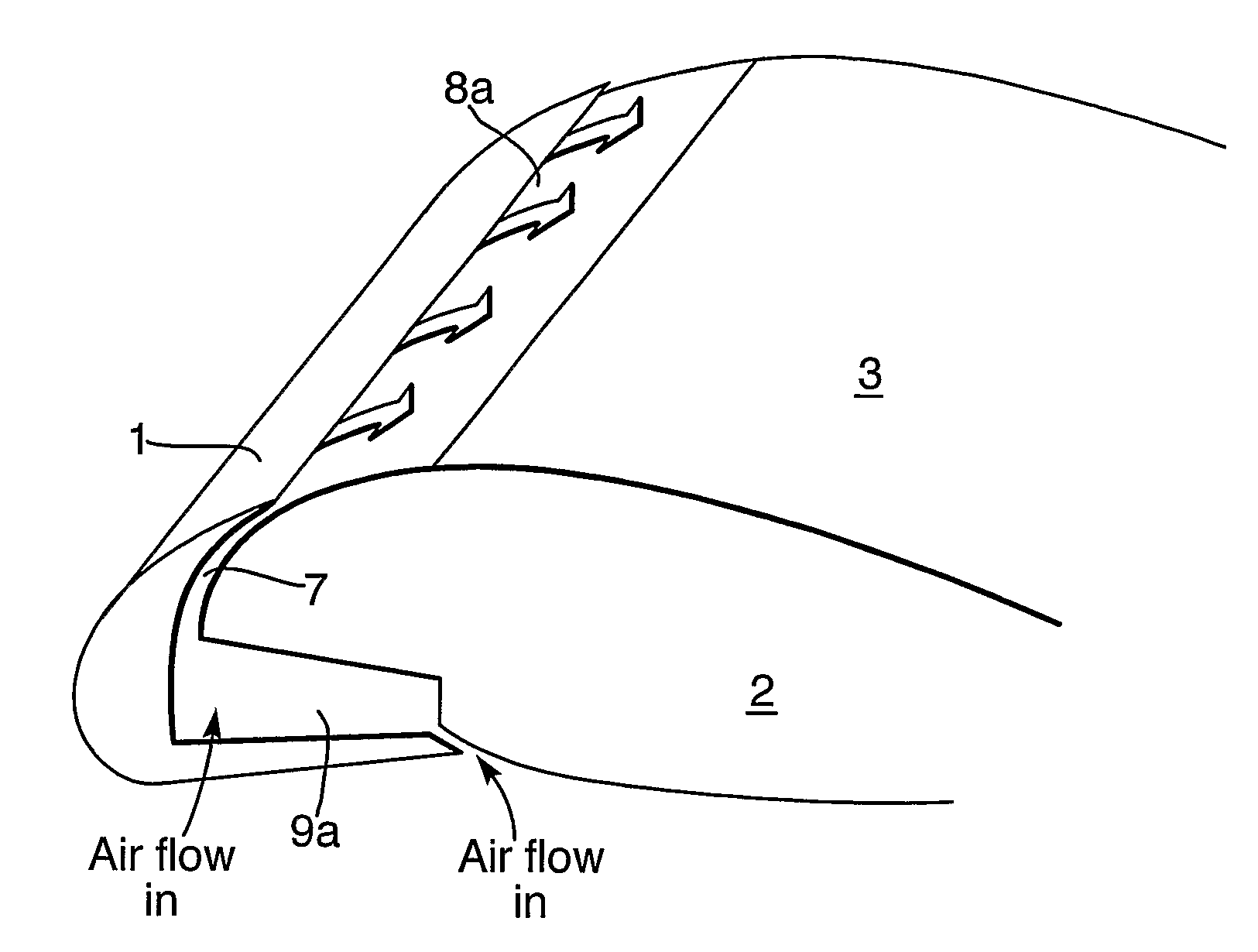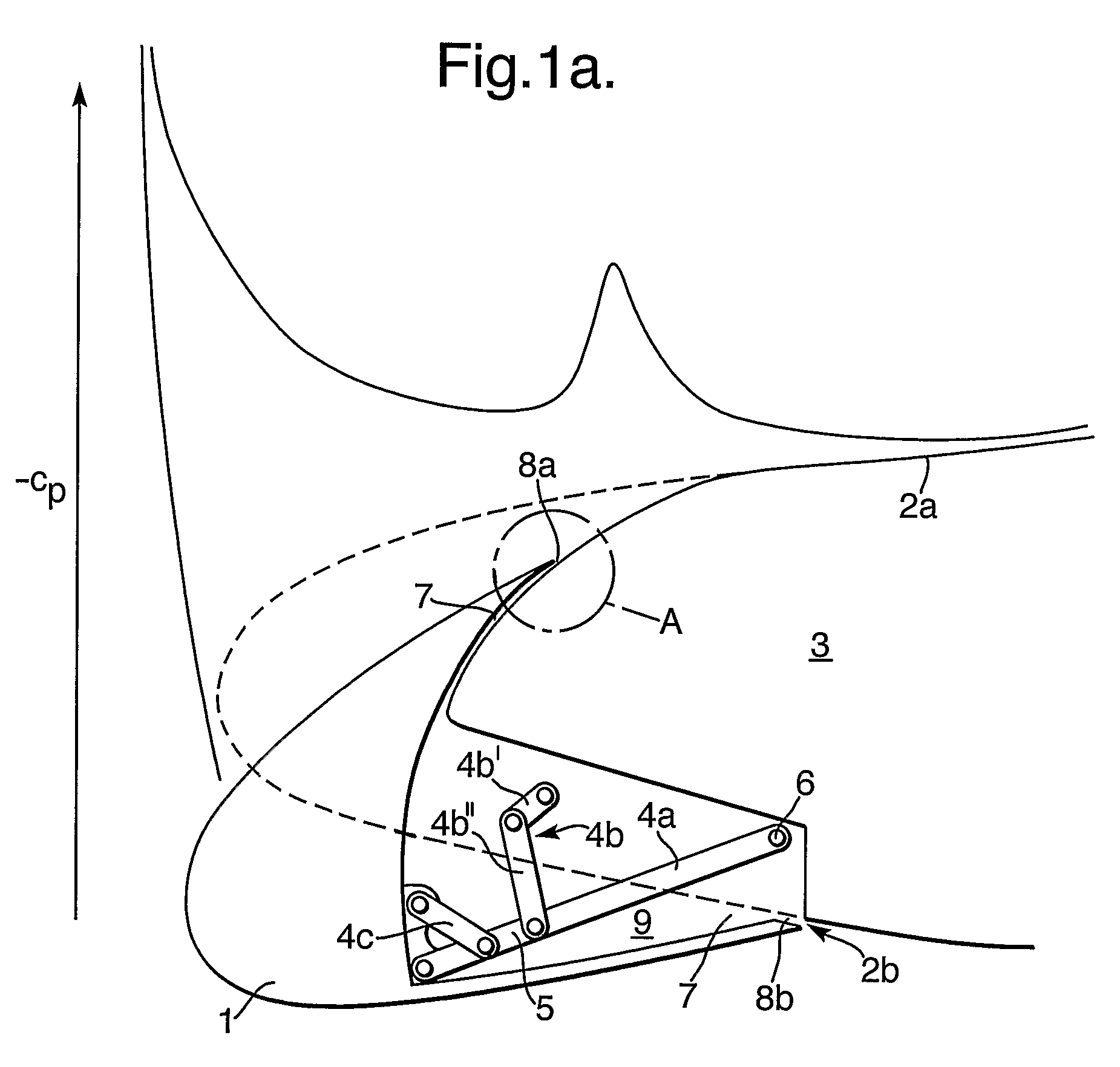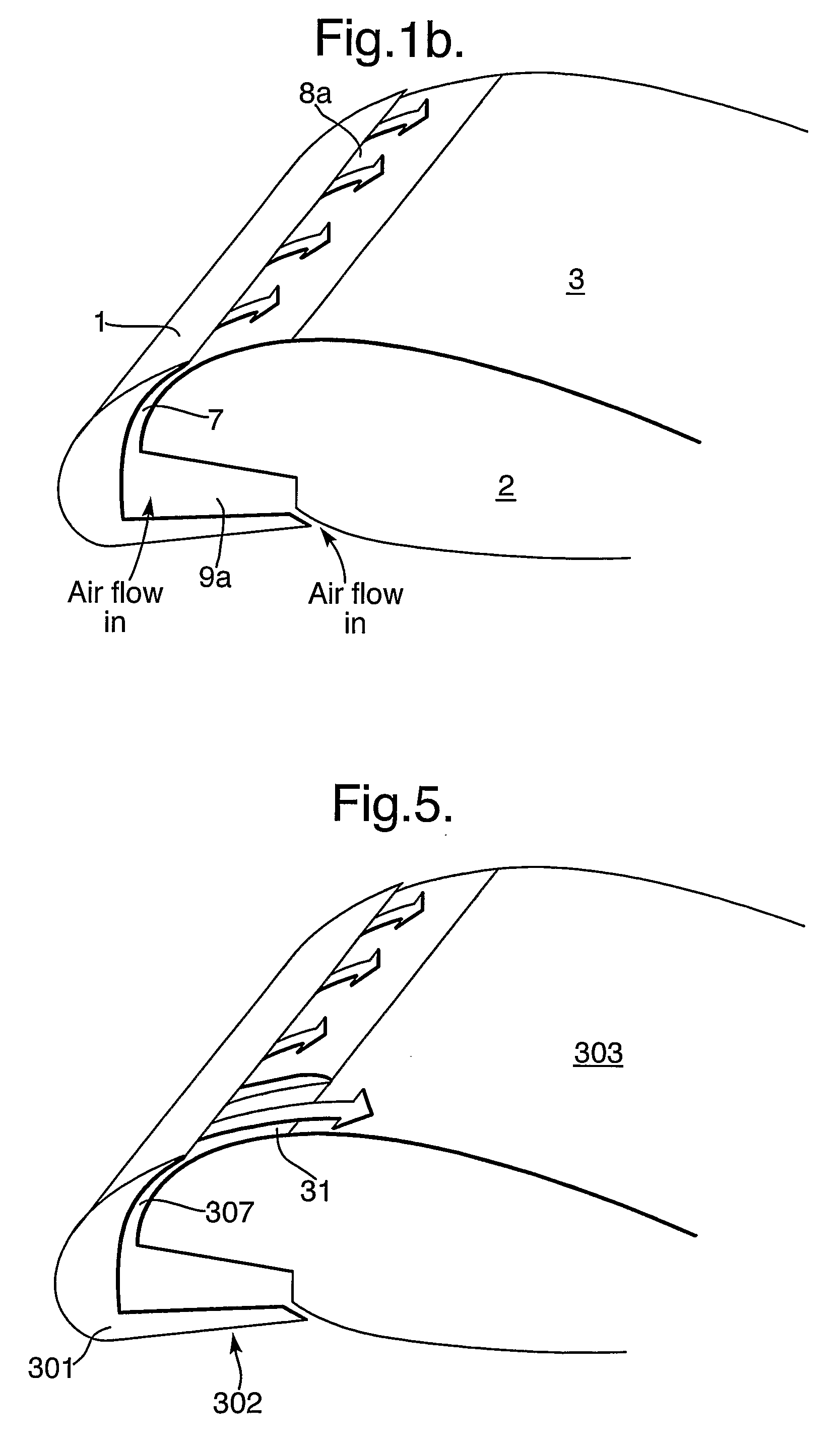High-lift device for an aircraft
a technology of high-lift devices and aircraft, which is applied in the field of aircraft, can solve the problems of affecting the air flow over the wing, reducing the maximum lift coefficient, increasing drag, and often only being reliably achieved with the addition of considerable weight, complexity and cost, and achieving the effect of significantly reducing the rate of air flowing past the vortex generator, reducing the component of flow, and increasing the streamwise component of flow
- Summary
- Abstract
- Description
- Claims
- Application Information
AI Technical Summary
Benefits of technology
Problems solved by technology
Method used
Image
Examples
first embodiment
[0044]In the deployed position, there exists an opening 7 between the drooped leading edge flap 1 and the adjacent main wing portion 3. The opening 7 is in the form of a gap, the gap comprising slots 8a &8b on the upper and lower surfaces of the wing 2 respectively, and further including the cavity 9. An upper trailing edge and a lower trailing edge of the drooped leading edge flap 1 are immediately adjacent to the main wing portion 3 and define an upper gap (slot 8a) and a lower gap (slot 8b), respectively, to thereby define a cavity 9 between the drooped leading edge flap 1 and the main wing portion 3. In the invention, the cavity is open at both spanwise ends 9a and 9b.
[0045]During flight, the local pressure on the upper surface 2a of the wing 2 is lower than the local pressure on the lower surface 2b of the wing 2, and lower than the local pressure at the spanwise ends 9a and 9b of the drooped leading edge flap 1. As a result of this pressure differential, air flows from the lo...
second embodiment
[0051]FIG. 3 shows an aircraft wing according to the invention. A drooped leading edge flap 101 is located on the wing 102, inboard of the engine nacelle 15, which is supported on the engine pylon 17. Outboard of the engine nacelle 15, there is located a midboard section slat 19.
[0052]The drooped leading edge flap 101 is moved from the stowed position (not shown) towards the deployed position (the position in which it is shown in FIG. 3) by using an actuator (not shown) located within the wing 102. When the drooped leading edge flap 101 is deployed, a region 20 on the upper surface of the adjacent main portion of the wing 103 is exposed.
[0053]During flight, a pressure differential occurs between the upper and lower surfaces of the wing. During certain flight conditions when the drooped leading edge flap is in the deployed position, the wing 102 generates an aerodynamic force of sufficient magnitude and direction, such that the drooped leading edge flap 101 is caused to lift away fro...
fourth embodiment
[0059]FIG. 5 shows a wing 302 according to the invention. The large arrows indicate movement of air. The dimensions of the opening 307 are increased at the outboard end of the drooped leading edge flap 301. This is achieved by locally reshaping the leading edge 31 of the main wing portion 303 in this region. This allows an increased mass flow of air through the part of the opening 7 in this region, delivering even more energetic flow into, and further stabilising, the boundary layer. The outboard end of the drooped leading edge flap 301 is located near an engine pylon (not shown) and the drooped leading edge flap therefore stabilises the flow in this critical region.
[0060]It will be appreciated that various modifications may be made to the above-described embodiments of the invention. For example, the feature of the net aerodynamic force effecting movement of the drooped leading edge flap and thereby creating an opening (as described in relation to the second embodiment), need not n...
PUM
 Login to View More
Login to View More Abstract
Description
Claims
Application Information
 Login to View More
Login to View More - R&D
- Intellectual Property
- Life Sciences
- Materials
- Tech Scout
- Unparalleled Data Quality
- Higher Quality Content
- 60% Fewer Hallucinations
Browse by: Latest US Patents, China's latest patents, Technical Efficacy Thesaurus, Application Domain, Technology Topic, Popular Technical Reports.
© 2025 PatSnap. All rights reserved.Legal|Privacy policy|Modern Slavery Act Transparency Statement|Sitemap|About US| Contact US: help@patsnap.com



